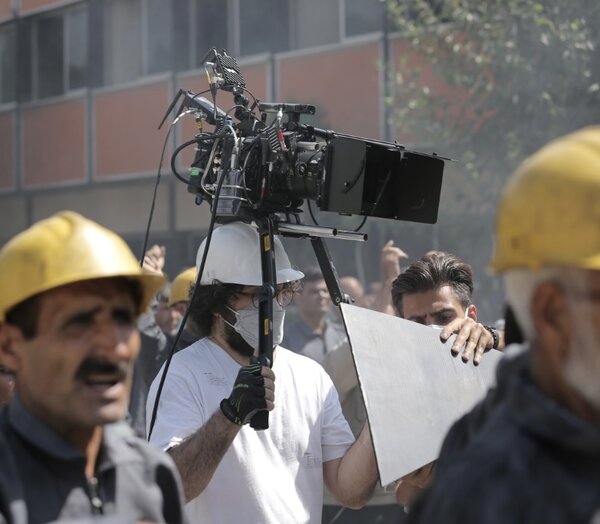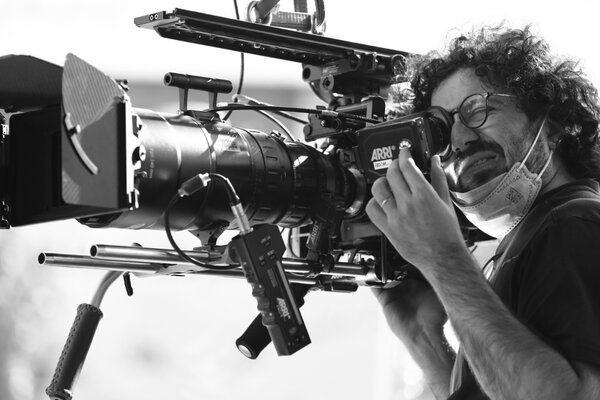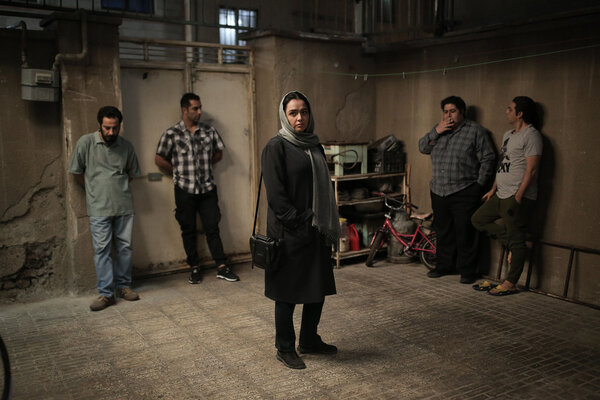Cinematographer Hooman Behmaanesh looks back on the set of "Leila’s Brothers", by Saeed Roustayi
24-Karat GoldLeila has dedicated her whole life to her parents and her four brothers. Deeply affected by the unprecedented economic crisis, the family is drowning in debt and tearing itself apart as their personal disappointments grow. In order to get them out of this situation, Leila hatches a plan : buy a shop to start a business with her brothers. Everyone puts all their savings into it, but they need one more backer. Just then, and to everyone’s surprise, their father Esmail promises his clan a large sum of money to become its new patriarch, which is the highest honor possible in Persian tradition. Gradually, the actions of each member bring the family to the brink of disaster, as their patriarch’s health declines.
What was the main challenge of the film, photographically speaking ?
Hooman Behmaanesh : Above all, we wanted to immerse the viewer in the daily reality of Iran. We wanted him to see the film through Iranian eyes. Not as a documentary, but as a fiction deeply rooted in our country’s daily reality. You know, what’s happening to this modest family that can’t make ends meet is the fate of many of Iranians right now. And I can tell you that each member of the crew, whether cast members or technicians, had at one time or another a scene or a dialogue that could have been about their own situation.

The opening sequence showing a riot in a gigantic metallurgical plant is visually very ambitious, but it’s almost a narrative decoy given what the rest of the film is like...!
HB : This sequence took us nearly seven days to shoot. Mainly because of the Covid restrictions, but also because everything was done in a real factory, with extras who were the real workers. The situation described in the film also resonated with the reality in the factory, the workers also hadn’t been paid and some were on the verge of revolt. It wasn’t very hard to get them to act, it was even quite strange to find oneself between reality and fiction... and our relations with the managers of this state-owned factory were not easy either ! Everything was shot with a single camera, often handheld, in a mode that is perhaps a little more documentary-style than the rest of the film. I think this sequence is important to show our country’s social reality as the opening of the film.
How did you take in what the screenplay implied in terms of the many scenes shot inside the family home ?
HB : The film contains a great deal of dialogue, so it seemed logical to me that the faces of the actors should be the center of my concerns on screen. The film is mainly shot in 47, 75 and 125mm with Arri Signature Primes. We chose an Arri Alexa Mini LF, which is compact and fairly light, as well as two Alura Lightweight zoom lenses.

The light, too, was from Arri, with a set of 360 and 120 SkyPanels, 4 kW HMIs and the new Orbiter LED projectors which I found highly practical. Even though each of the six faces took on the lighting quite differently, we made every effort, during shooting and make-up, to deliver the most definitive images possible. My philosophy is that on-set work delivers 18-carat gold to the edit, and color grading shouldn’t have much to do for it to become 24-carat.
At a key moment in the film, the characters get out of their stuffy apartment a bit. This is the scene on the roof at night between the two protagonists...
HB : Although I have already shot thirty-five feature films, this is one of the most complex sequences I have ever had to shoot in my entire career. First a word on the situation : here again, this is a sequence that is intimately linked to the life of every Iranian family. The roofs of our houses represent for us a kind of very private place where we can extract ourselves from the family home and evoke – as Leila and Alazine do – very personal, very intimate subjects. This is the first time in the film where they confide in each other with an open heart. Saeed, the director, absolutely wanted to find the perfect place for this scene, and we settled on this roof terrace, surrounded by very tall buildings, like an arena or, as Saeed described it, a ‘graveyard’. The staging and angles envisioned by Saeed covered almost 360°, so I had no way of placing spotlights on stands on the terrace. We also wanted to keep shadow around them, and we wanted the intermittent headlights from the traffic below to sometimes mark the backgrounds. To do this, I had to place several SkyPanels on neighboring buildings to light up the scene, and also rely on the existing city lights, which are not very bright in our area. The high-angle shot rendered this dark night atmosphere well with all the details in the shadows.

In general, is bleak overhead lighting common in Iranian homes ?
HB : Yes, this is one of Iran’s paradoxes. Energy is really cheap here and people’s homes are often overflowing with light. On the contrary, public lighting is quite limited compared to what you have in Europe. This ratio of contrast between interior and exterior at night is completely reversed between yours and ours. We are not in the same world ! And then, having a brightly-lit home is a matter of tradition to us. We often describe someone living in a dark house as a bad omen, it’s attached to the diea of having a dark heart. So, when you’re brought to portray the life of an Iranian family, as we were, the interiors have to be over-lit. There isn’t really space for shadows, dark walls or for the contrast that DoPs like so much ! My approach is based on realism, first and foremost, and thus the use of the fluorescent tubes that most of those houses use for lighting. I chose not to correct them and kept the green tones that you sometimes see in one of the rooms. This is the same approach we chose on our earlier films, like Just 6.5.
Which sequence are you most proud of technically ?
HB : I’m very proud of the car interior sequences at night, like those that surround the wedding in the second part of the film. These sequences were shot in studio, on a green screen, and I think the lighting work to mimic traffic, along with the VFX integration of layers, seemed a great success to me. Did you notice it yourself ?
(Comment collected by François Reumont, for the AFC, and translated from French by A. Baron-Raiffe)
 En
En Fr
Fr





